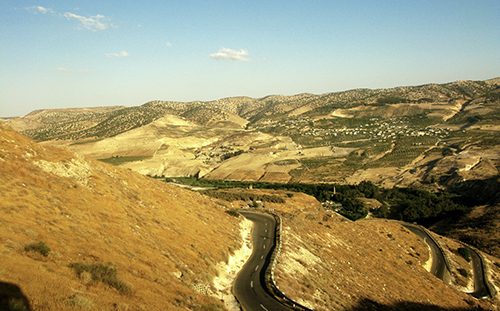
It is certain that, located right at the center of the territories belonging to the Transjordan tribes, Israelites would have had crossed the river and its valley as often as Londoners cross the Thames, but the river is never named in the Bible. Its historical importance cannot also be doubted since it served to demarcate the Bashan highlands from Gilead. Surprisingly, it is first mentioned in Jewish writings only in the Mishnah.
Open Map ☰
The river is remembered most significantly in the history of the Middle East as the location (where it joins the Jordan Valley) of the Battle of Yarmuk (15-20 Aug 636) when the Muslim army of the Rashidun Caliphate won a decisive victory over the Byzantine forces and the Levant and Syria (including Palestine) came, henceforth, under Muslim domination. In the events following the First World War, it became the boundary that separated the newly minted nations of Syria and Jordan, which it still does in the upper stretches of the river. In the lower stretches, it separates today Jordanian territory from the Israelite-occupied Golan Heights.

The Yarmuk Valley, the site of the Battle of Yarmuk

©ALBERITH
060621lch